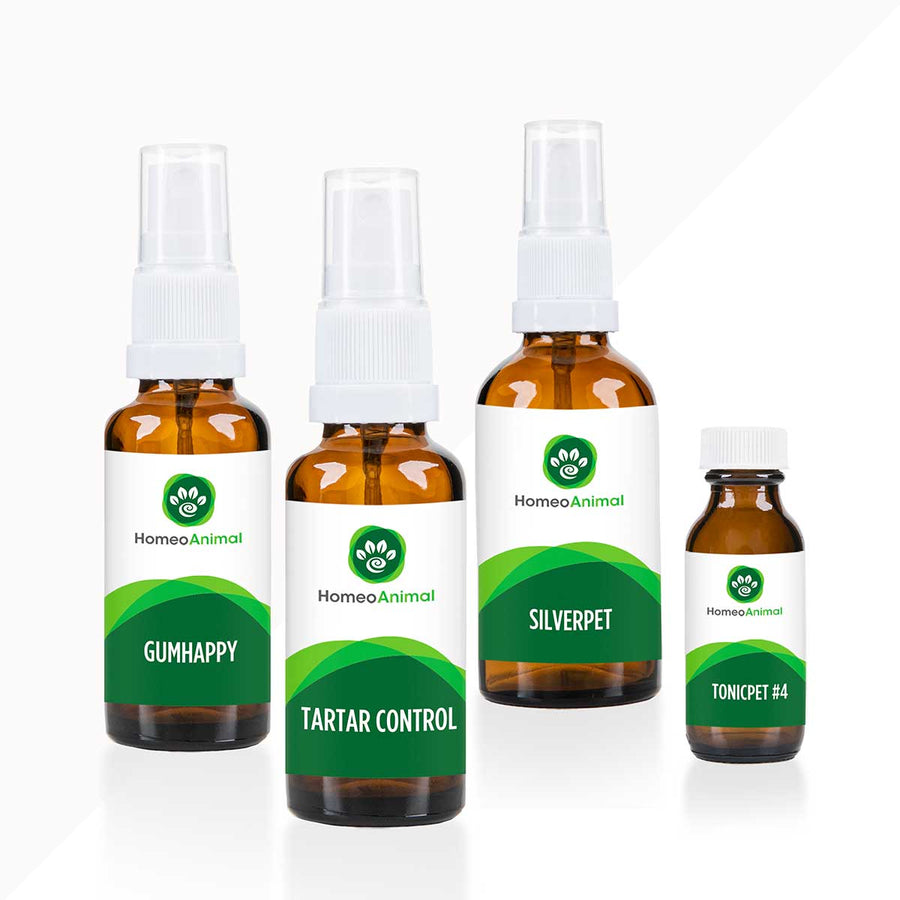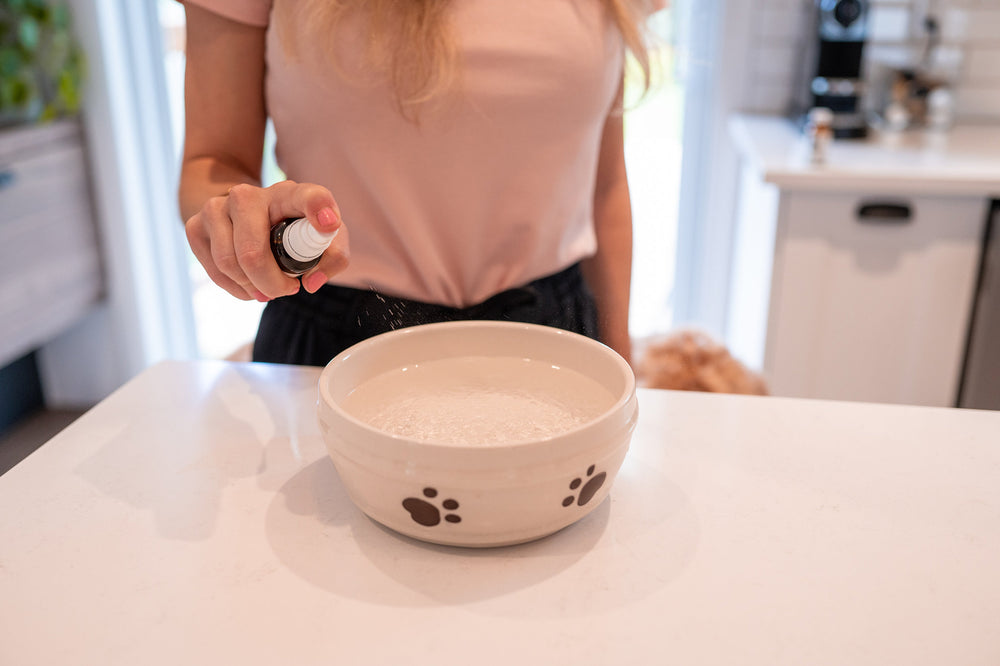Gingivitis in Cats: 8 Important Things You Need to Remember
Gingivitis in cats is one of the most common oral health issues that your feline family member could be prone to at some point in his life.
However, this doesn’t mean that feline gingivitis should just be brushed aside when it unexpectedly gets in the picture. It is crucial to take note that this condition could easily put your beloved pet in a rather cat-astrophic situation sooner or later without the proper care and attention.
- Click to learn more : 👉 Provide support to your cat who's fighting GINGIVITIS with our Natural Product 🐱
This is the reason why I’ve put together this comprehensive yet easy-to-follow blog post on gingivitis in cats so you will have a much clearer perspective on what it is, the things that could possibly set it off, as well as the symptoms that you keep an eye out for.
Moreover, I’ve also listed some no-fuss ways that will naturally help your precious kitty steer clear from gingivitis in cats. So make sure you check out this blog post all the way through to learn what these are.
Why don’t we start things off by determining exactly what cat gingivitis is?
What is gingivitis in cats?
Gingivitis in cats is a type of feline oral disease that is characterized by the inflammation of the gums. Besides making the gums look either prominently red or noticeably pale, this health issue also gives them a distinct puffy appearance.
Although deemed as a common problem among cats, feline gingivitis can progress to an even more serious condition called periodontal disease if left untreated. The latter doesn’t just cause severe damage to the soft tissues of the gums, but also attacks the bones that hold your cat’s teeth together.
Unlike what a lot of people mistakenly think, gingivitis in cats doesn’t just affect older felines. This condition can target any cat regardless of age, sex, and breed. However, senior cats seem to be more vulnerable due to their extensive food preferences, which is seen as one of the factors for this oral disease.
Now we’ve got that out of the bag, let’s talk about the factors that could trigger cat gingivitis…
The causes of gingivitis in cats
There are six (6) factors that are believed to set off gingivitis in felines. I’m going to briefly describe each one below.
Diet
Your cat’s regular diet can significantly contribute to the occurrence of gingivitis. Some foods can accelerate the buildup of plaque on the surface of the teeth, which can eventually become hideaways for bad bacteria if not removed.
While this may sound surprising, plaque accumulation isn’t just attributed to your cat’s consumption of sugary stuff like cakes and sweets. Some relatively healthy edibles like whole grain bread and dried fruits can also lead to the same.
When in doubt, just remember that too much of a good thing is already counterproductive and may already be harmful to your feline family member.
Genetics
Recent studies reveal that genes and heredity play a key role in making a cat vulnerable to gingivitis in felines. This means that there is a possibility that your kitty is going to be predisposed to this oral health problem if either or both of his biological parents are afflicted with it.
Infectious illnesses
Although gingivitis in cats is typically set off by bacteria trapped by plaque that coats the teeth, there are some instances when certain adverse effects of infectious illnesses can trigger this condition.
An example of this is thrush, a feline oral yeast infection that is caused by the excessive growth of the fungus called Candida albicans. While thrush generally affects the tongue and the roof of the mouth, there are instances when these fungi spread out to the gums and somehow instigate cat gingivitis.
Injury or severe trauma
When a cat goes through an injury or severe trauma that affects the mouth, it is highly likely that his gums and teeth will also be affected. Bad bacteria can get into the nooks and crannies of the damaged tissue and trigger gingivitis in cats.
Poor oral hygiene
Deemed as the most notable cause of gingivitis in cats, poor oral hygiene allows the constant accumulation of plaque on the teeth. If left unchecked, there will be a certain point when this plaque buildup already harbors bacteria that tend to burrow inside the gums.
Without proper care and attention, these bacteria will end up causing soreness, redness, and puffiness to the gums, which are some of the tell-tale signs of cat gingivitis.
Tooth growth and alignment issues
It is also possible for teeth that are chipped, broken, or misaligned to cause small lesions in and around the gums. These lesions tend to become bigger and more substantial sooner or later, especially if left untreated, resulting in the onset of feline gingivitis.
Next, let’s discuss the indicators of gingivitis in cats that you should keep an eye on…
What are the symptoms of cat gingivitis?
While red and swollen gums are undoubtedly the most prominent indicators that your feline family member is suffering from gingivitis in cats, there are actually a few more related symptoms that you should keep in mind. These are the following:
- Constant drooling
- Sudden lack of interest in food or undereating
- Prefers to isolate or hide
- Noticeable bad breath
- Pawing at the mouth and cheeks
- Visible difficulty in eating or chewing
- Weight loss
Now let’s discuss a question that many cat parents have been asking me a lot lately: does gingivitis cause cats pain?
Is feline gingivitis painful?
Although this may sound surprising, the short answer is it depends.
You see, it’s not uncommon for a healthy cat—with proper oral hygiene—that gets afflicted with feline gingivitis to only experience very minor adverse effects during this condition. Besides going through bouts of slight pain and discomfort here and there, it won’t escalate into anything more serious.
On the other hand, it’s a different story when it comes to a rather sickly cat that has poor oral hygiene. Right from the onset of cat gingivitis, its adverse effects will tend to be very severe and painful for the affected feline. There is even a possibility that this oral disease will aggravate into a more serious condition without a warning.
Next, let’s find out if feline gingivitis will disappear on its own without human intervention…
Does gingivitis in cats go away on its own?
Like I emphasized earlier, the length and severity of gingivitis in felines heavily depends on two factors: the overall health and wellness of a cat, and his oral hygiene.
Apart from the possibility that a healthy cat with proper oral hygiene will only go through very minor side effects of feline gingivitis, its duration will also be significantly reduced because his immune system is putting up a good fight.
All in all, this makes it seem that the disease has gone away on its own.
But the thing is whether a cat is in good shape or the other way around, neglecting to give him the immediate and proper care and attention he deserves when feline gingivitis strikes can potentially lead to even more serious health issues sooner or later.
In the next part of our discussion, I’m going to walk you through a few natural ways to help your feline family member not just keep clear of gingivitis in cats, but also support him during the same…
Natural ways to help your cat keep clear from gingivitis
Below you will find some of the most straightforward and no-nonsense things you should include in your kitty home care checklist when it comes to gingivitis in cats:
A regular oral check does wonders against gingivitis in cats.
One of the factors that makes cat gingivitis a somewhat tricky disease is that it’s usually spotted when it has already started manifesting its adverse effects such as swollen and sore gums.
And given the fact that cats tend to hide illnesses very well, feline gingivitis is often discovered when its symptoms are already in full swing. However, you can somehow keep this health issue in check if you carefully examine your cat’s teeth and gums on a regular basis.
It’s as simple as inspecting for any chipped or broken teeth, bad breath, as well as signs of bleeding in and around the gums. Just make sure you do this as gently and carefully as possible and you’re good to go.
And don’t forget to give your cat a treat afterward for being such a good kitty.
Mixing up your cat’s diet is important.
What’s really interesting about gingivitis in cats is that your feline family member’s diet can somehow trigger this condition one way or another. As I’ve pointed out earlier, this health problem can be potentially set off regardless of the food he is consuming regularly.
But the thing is, making sure to vary your kitty’s diet is one way to stave off gingivitis in felines. Keep in mind to have a balanced amount of wet and dry food, as well as limit his intake of sweets and other treats.
Apart from helping your precious pet stay clear from cat gingivitis, mixing up his diet also helps stave off obesity and other related health problems due to being overweight.
It is crucial to take note, though, that “varying” is not the same as “cutting back.” So long as your cat isn’t over his ideal weight, it is perfectly okay to let him enjoy his favorite foods and snacks from time to time in moderation.
Include a consistent oral hygiene regimen in your cat care checklist
Unlike what a lot of cat parents mistakenly believe, having good oral hygiene for your feline family member isn’t that difficult and burdensome.
It’s as straightforward as gently swabbing your kitty’s teeth and gums with a Q-tip moistened with water after meals. This is to make sure that there are no bits of food debris lying around that could lead to gingivitis in cats.
As an alternative a-purr-roach, you can also use a kitty-friendly toothbrush and toothpaste to do this. Just keep in mind to make your strokes as gentle as you can and do not apply a lot of pressure during the same.
While either strategy works just fine depending on your preference, both options will require a bit of getting used to for your feline family member so it is really important to be very patient with him when doing this.
Aloe vera soothes and promotes gum repair at the same time.
According to a study published in the National Center for Biotechnology Information (NCBI), aloe vera’s natural analgesic and anti-inflammatory properties did not just help soothe the adverse effects of plaque-induced gingivitis, but also promoted the healing of soft tissues that were damaged by this health issue.
To use aloe vera in treating gingivitis in cats, pick a mature leaf and wash it thoroughly. I recommend choosing one that’s located in the outermost layer since these are the ones that contain lots of gel. After washing the aloe vera leaf, carefully peel all of the outer skin.
Next, grate the piece to extract the gel. You can apply this aloe vera gel directly on your feline family member’s affected gums. Alternatively, you can also use the gel as a toothpaste substitute.
Calendula helps reduce dental plaque.
Another NCBI study highlighted that calendula, also known as riddles and marigold, contained various flavonoids and polyphenols that possessed anti-inflammatory, wound healing, and antimicrobial capabilities.
To use calendula in treating gingivitis in cats, steep the dried flowers in a bowl of warm water for at least ten (10) minutes or until the liquid has taken on an amber color. Let it cool down completely.
You can either use this calendula tea as a water substitute for your cat or as a stand-in for cat toothpaste.
Coconut oil helps stave off bacteria and inflammation.
The NCBI also highlighted in a different study that coconut oil contains a rich amount of lauric acid, which has been seen to have “proven anti-inflammatory effects and antimicrobial effects.”
Apart from observing that coconut oil helped inhibit the buildup of bad bacteria in the mouth, the proponents of the study also stressed that it also somehow held back the formation of plaque.
To use coconut oil in treating gingivitis in cats, make sure you go for the food grade extra virgin variety before you proceed. Moisten a Q-tip with the extra virgin coconut oil and use it to gently swab the affected gums.
Make sure you also include the tongue and the inner cheeks while you’re doing this since extra virgin coconut oil has a soothing effect on damaged tissues.
Ginger helps promote stronger responses against inflammation and oxidative stress.
As reported yet again by the NCBI, ginger is abundant in phenolic compounds such as paradol, gingerol, shogaol, and β-bisabolene, which have anti-oxidative and anti-inflammatory properties. Moreover, these compounds have also been observed to be very active when used for periodontal disease.
To use ginger in treating gingivitis in cats, peel and grate a thumb-sized piece. Remember to save the ginger juice while you’re at it since it contains a lot of the beneficial phenolic compounds. Mix in the grated ginger to your cat’s regular meals. Make sure you integrate it thoroughly since ginger has a spicy kick if eaten directly.
You can also add ginger juice to your feline family member’s water as an alternative application. However, keep in mind that ginger juice should be liberally diluted since raw ginger juice can be pretty hot for your pet’s taste buds if consumed straight.
Turmeric is an anti-inflammatory powerhouse.
The NCBI pointed out in another study that besides having “anti-inflammatory, antioxidant, antibacterial, antiviral, and antifungal properties,” turmeric also helped “reduce plaque index (PI) and gingival index (GI), and can therefore be used in the prevention and treatment of gingivitis.”
To use turmeric in treating gingivitis in cats, thinly slice a finger-sized piece and let it steep in a cup of hot water for at least fifteen (15) minutes. Let the mixture cool down completely. Don’t be alarmed if it has taken on a pronounced reddish tinge. This is normal and won’t affect the taste or even the benefits of turmeric.
You can use this turmeric tea as a water substitute for your kitty. Make sure you remove the turmeric pieces before serving it to your pet.
And while we are on the subject of natural ways to support your pet during gingivitis, here’s one of my favorite options that I’m sure you’ll also appreciate…
A superb natural option you should consider having in your kitty home care checklist
 The GUM HAPPY Advanced Kit is specifically designed to help support healthy gums, maintain healthy teeth and periodontium, as well as promote overall oral comfort.
The GUM HAPPY Advanced Kit is specifically designed to help support healthy gums, maintain healthy teeth and periodontium, as well as promote overall oral comfort.
Moreover, the GUM HAPPY Advanced Kit consists of four (4) Zumalka by HomeoAnimal products, namely GUMHAPPY, TARTAR CONTROL, SILVERPET and TONICPET #4. We will check out each one briefly below:
- GUMHAPPY helps promote gum health;
- TARTAR CONTROL helps support clean teeth and fresh breath, thus maintaining a healthy periodontium;
- SILVERPET helps promote gum health and greatly supports the immune system; and
- TONICPET #4 promotes the circulation of oxygen in all parts of the mouth for added comfort.
What’s really convenient about using the GUM HAPPY Advanced Kit is that GUMHAPPY and TARTAR CONTROL can be directly sprayed in your cat’s mouth or mixed in with his water.
As for SILVERPET, you can either apply the product directly to the affected area (i.e. sore and swollen gums) or spray it in your feline family member’s water. You can also spray it in your pet’s mouth as an alternative application.
With regard to TONICPET #4, you just have to determine how many pellets to use depending on your pet’s size, crush the same, and mix it with your cat’s food or water.
Conclusion
That wraps up our discussion on gingivitis in cats. If you’re looking to find out more about the ways you can naturally support your feline family member during illness, make sure you sign up for our FREE HEALTH ADVISOR GUIDANCE right now.
Apart from giving you the lowdown on the natural products and treatment options that best fit your animal's health needs, you’ll also get in on lots of useful tips and recommendations from our Natural Health Advisors.






Leave a comment